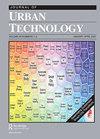Mining the Sequence Pattern of Functional Zones to Analyze the Spatial Layout of Port Cites in Coastal Zones
IF 4.4
3区 经济学
Q1 URBAN STUDIES
引用次数: 0
Abstract
ABSTRACT To study the impact of port changes on the urban functional structure and reveal the interactive relationship between ports and cities, a functional sequence extraction model (FSEM) is constructed in this study. The model employs a fan-shaped sampling method to divide experimental areas, extracts the functional zone sequence from sea to land along each sample line to establish the sample data set and mines the optimal functional sequence in each experimental area through association rules. Qingdao Port, Johor Port, and Manila Port are selected as experimental areas to verify the model, and the random forest (RF) model is adopted to identify the urban functional zones during different periods. The results indicate that the development of ports has a profound impact on the spatial configuration and structure of functional zones from sea to land. This method is conducive to solving the technical problems associated with the spatial and interactive development of port cities and provides a model reference for studies of the spatial correlation in other regions. Only by overall control and planning, overall coordination of the distribution of various functional areas, and reasonable spatial layout will the development of ports and cities be sustainable.挖掘功能区序列模式,分析沿海地区港口城市的空间布局
摘要 为研究港口变化对城市功能结构的影响,揭示港口与城市的互动关系,本研究构建了功能序列提取模型(FSEM)。该模型采用扇形抽样方法划分实验区,沿每条抽样线提取从海到陆的功能区序列建立样本数据集,并通过关联规则挖掘各实验区的最优功能序列。选取青岛港、柔佛港和马尼拉港作为验证模型的实验区,采用随机森林(RF)模型识别不同时期的城市功能分区。结果表明,港口的发展对从海洋到陆地的功能区空间配置和结构有着深远的影响。该方法有利于解决港口城市空间互动发展的相关技术问题,也为其他地区的空间关联研究提供了示范参考。只有通过整体控制和规划,统筹协调各功能区的分布,进行合理的空间布局,港口城市的发展才能可持续。
本文章由计算机程序翻译,如有差异,请以英文原文为准。
求助全文
约1分钟内获得全文
求助全文
来源期刊

Journal of Urban Technology
URBAN STUDIES-
CiteScore
8.50
自引率
4.20%
发文量
42
期刊介绍:
The Journal of Urban Technology publishes articles that review and analyze developments in urban technologies as well as articles that study the history and the political, economic, environmental, social, esthetic, and ethical effects of those technologies. The goal of the journal is, through education and discussion, to maximize the positive and minimize the adverse effects of technology on cities. The journal"s mission is to open a conversation between specialists and non-specialists (or among practitioners of different specialities) and is designed for both scholars and a general audience whose businesses, occupations, professions, or studies require that they become aware of the effects of new technologies on urban environments.
 求助内容:
求助内容: 应助结果提醒方式:
应助结果提醒方式:


